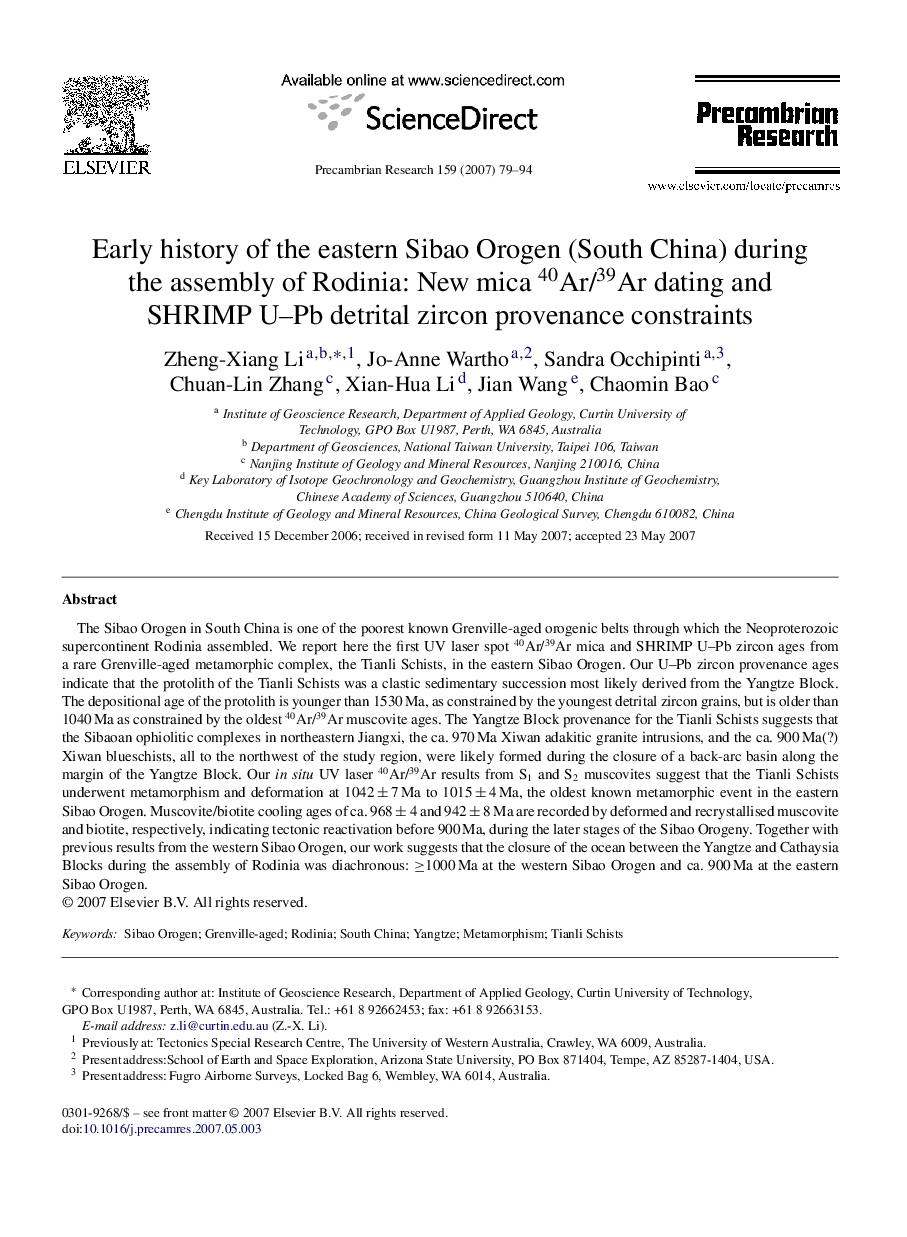| Article ID | Journal | Published Year | Pages | File Type |
|---|---|---|---|---|
| 4724565 | Precambrian Research | 2007 | 16 Pages |
The Sibao Orogen in South China is one of the poorest known Grenville-aged orogenic belts through which the Neoproterozoic supercontinent Rodinia assembled. We report here the first UV laser spot 40Ar/39Ar mica and SHRIMP U–Pb zircon ages from a rare Grenville-aged metamorphic complex, the Tianli Schists, in the eastern Sibao Orogen. Our U–Pb zircon provenance ages indicate that the protolith of the Tianli Schists was a clastic sedimentary succession most likely derived from the Yangtze Block. The depositional age of the protolith is younger than 1530 Ma, as constrained by the youngest detrital zircon grains, but is older than 1040 Ma as constrained by the oldest 40Ar/39Ar muscovite ages. The Yangtze Block provenance for the Tianli Schists suggests that the Sibaoan ophiolitic complexes in northeastern Jiangxi, the ca. 970 Ma Xiwan adakitic granite intrusions, and the ca. 900 Ma(?) Xiwan blueschists, all to the northwest of the study region, were likely formed during the closure of a back-arc basin along the margin of the Yangtze Block. Our in situ UV laser 40Ar/39Ar results from S1 and S2 muscovites suggest that the Tianli Schists underwent metamorphism and deformation at 1042 ± 7 Ma to 1015 ± 4 Ma, the oldest known metamorphic event in the eastern Sibao Orogen. Muscovite/biotite cooling ages of ca. 968 ± 4 and 942 ± 8 Ma are recorded by deformed and recrystallised muscovite and biotite, respectively, indicating tectonic reactivation before 900 Ma, during the later stages of the Sibao Orogeny. Together with previous results from the western Sibao Orogen, our work suggests that the closure of the ocean between the Yangtze and Cathaysia Blocks during the assembly of Rodinia was diachronous: ≥1000 Ma at the western Sibao Orogen and ca. 900 Ma at the eastern Sibao Orogen.
